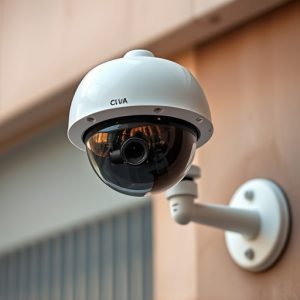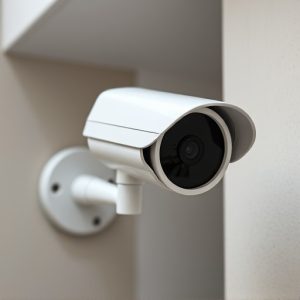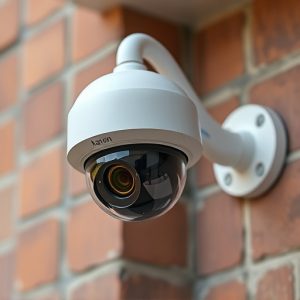Dummy Security Dome Cameras: Specifications, Effectiveness, and Real-World Use
Dummy security cameras, featuring HD video, infrared night vision, motion detection, weather resista…….
Dummy security cameras, featuring HD video, infrared night vision, motion detection, weather resistance, and two-way audio, are powerful deterrents against crime both at home and in business. While their psychological impact can reduce criminal activity, critics debate their effectiveness, claiming they could mislead residents and create a false sense of security. In reality, dummy cameras are versatile tools widely adopted in retail and offices to prevent shoplifting, monitor entry points, and deter vandalism. However, their success in crime reduction depends on balancing fear of detection with potential misleading perceptions. For optimal results, combining dummy cameras with other strategies is essential.
“Unravel the mysteries of dummy security dome cameras and their impact on crime deterrence. This comprehensive guide delves into the world of these seemingly innocuous devices, offering a detailed overview for consumers and law enforcement alike. We explore key features, specifications, and their role in preventing criminal activity. From understanding their mechanics to real-world applications, this article asks: do dummy security cameras truly make an area safer? Discover the truth behind these imitation surveillance solutions.”
- Understanding Dummy Security Dome Cameras: A Comprehensive Overview
- Key Features and Specifications: What to Look For
- The Role of Imitation in Crime Deterrence: Effective or Misleading?
- Real-World Applications: Where are Dummy Cameras Really Used?
- Debunking Myths: Do Dummy Cameras Really Prevent Criminal Activity?
Understanding Dummy Security Dome Cameras: A Comprehensive Overview
Dummy security dome cameras have gained significant attention as a potential deterrent for criminal activities, especially in public spaces and commercial areas. These devices are meticulously designed to mimic real security cameras, providing a visual representation that can significantly impact potential criminals’ behavior. Understanding their purpose is essential when considering them as part of an overall security strategy.
By strategically placing these realistic replicas, businesses and municipalities can create the illusion of heightened surveillance. This psychological effect can deter would-be offenders from targeting areas where dummy cameras are visible. The success of such cameras lies not only in their visual appeal but also in their ability to convey a strong message: any attempt at illegal activity will be closely watched and potentially recorded, even if the actual video footage is non-existent. Thus, do dummy security cameras deter crime? In many cases, yes, as they serve as an effective psychological barrier against potential criminal behavior.
Key Features and Specifications: What to Look For
Dummy security cameras, though seemingly passive, can be a powerful tool in deterring crime. When strategically placed, they send a clear message to potential criminals that their actions are being watched. Beyond this psychological effect, modern dummy cameras come packed with key features and specifications that make them valuable investments for home and business security.
When considering a dummy security dome camera, look for features like high-definition video quality, infrared night vision, motion detection, and weather resistance. These attributes ensure that the camera provides clear footage both day and night, detecting any unusual activity with precision. Additionally, some models offer two-way audio capabilities, allowing you to communicate with visitors remotely, further enhancing security. Remember, a well-equipped dummy camera can act as a powerful deterrent, providing peace of mind in an uncertain world.
The Role of Imitation in Crime Deterrence: Effective or Misleading?
The use of dummy security dome cameras has gained traction as a potential tool for crime deterrence, but their effectiveness in actually preventing criminal activity is a topic of debate. These imitation cameras mimic the appearance and placement of real surveillance equipment, leading many to believe they can act as a powerful deterrent. The concept behind this strategy is straightforward: criminals are less likely to target areas or properties equipped with visible security measures.
However, the question arises—do these dummy cameras truly serve their purpose? Some argue that while the presence of fake cameras might deter opportunistic thieves, it may also mislead residents and law enforcement. If a potential criminal believes they are being watched but in reality, only a decoy system is active, they might feel encouraged to proceed with their illicit activities, potentially leading to a false sense of security. Thus, the success of dummy security cameras relies on balancing the psychological impact of deterrence against the risk of creating a misleading perception of safety.
Real-World Applications: Where are Dummy Cameras Really Used?
Dummy security dome cameras are versatile tools with a surprising range of real-world applications, often used beyond their obvious purpose of deterring crime. While their primary function is to simulate the presence of active surveillance, they serve various other critical roles in different industries and settings.
These cameras are widely employed in retail stores, office buildings, and residential complexes as a cost-effective alternative to conventional security systems. They can help prevent shoplifting, monitor entry points, and provide a sense of security to occupants. In addition, dummy cameras are valuable for deterring vandalism and other criminal activities by creating the perception of enhanced surveillance, even in areas with limited resources for traditional security measures.
Debunking Myths: Do Dummy Cameras Really Prevent Criminal Activity?
Many believe that dummy security dome cameras can significantly deter criminal activity, but this claim is often shrouded in myth. While visible surveillance cameras are proven to act as a psychological deterrent, the effectiveness of dummy cameras is less certain. The idea behind these fake cameras is that their mere presence will discourage potential criminals, creating a sense of increased security. However, studies show that most real-world criminal behavior is not deterred by visual indicators alone; crime patterns are influenced by a complex web of social, economic, and psychological factors.
In reality, the impact of dummy cameras on reducing crime rates is debatable. Criminals often adapt to their surroundings, quickly realizing if a camera is genuine or not. Moreover, well-lit areas with visible surveillance equipment may actually attract certain types of criminal activity, as criminals can assess the potential consequences of their actions more easily. Therefore, while dummy security dome cameras might create an illusion of enhanced security, they should be accompanied by other effective crime prevention strategies for optimal results in deterring criminal behavior.
Dummy security dome cameras, while not actively monitoring, play a significant role in crime deterrence through strategic placement and realistic appearances. By understanding their key features and specifications, correctly implementing them, and recognizing the value of imitation in preventing criminal activity, we can maximize their effectiveness. Despite ongoing debates about their impact on reducing crime, numerous real-world applications demonstrate that dummy cameras can be a valuable asset in securing properties and fostering safer communities.


